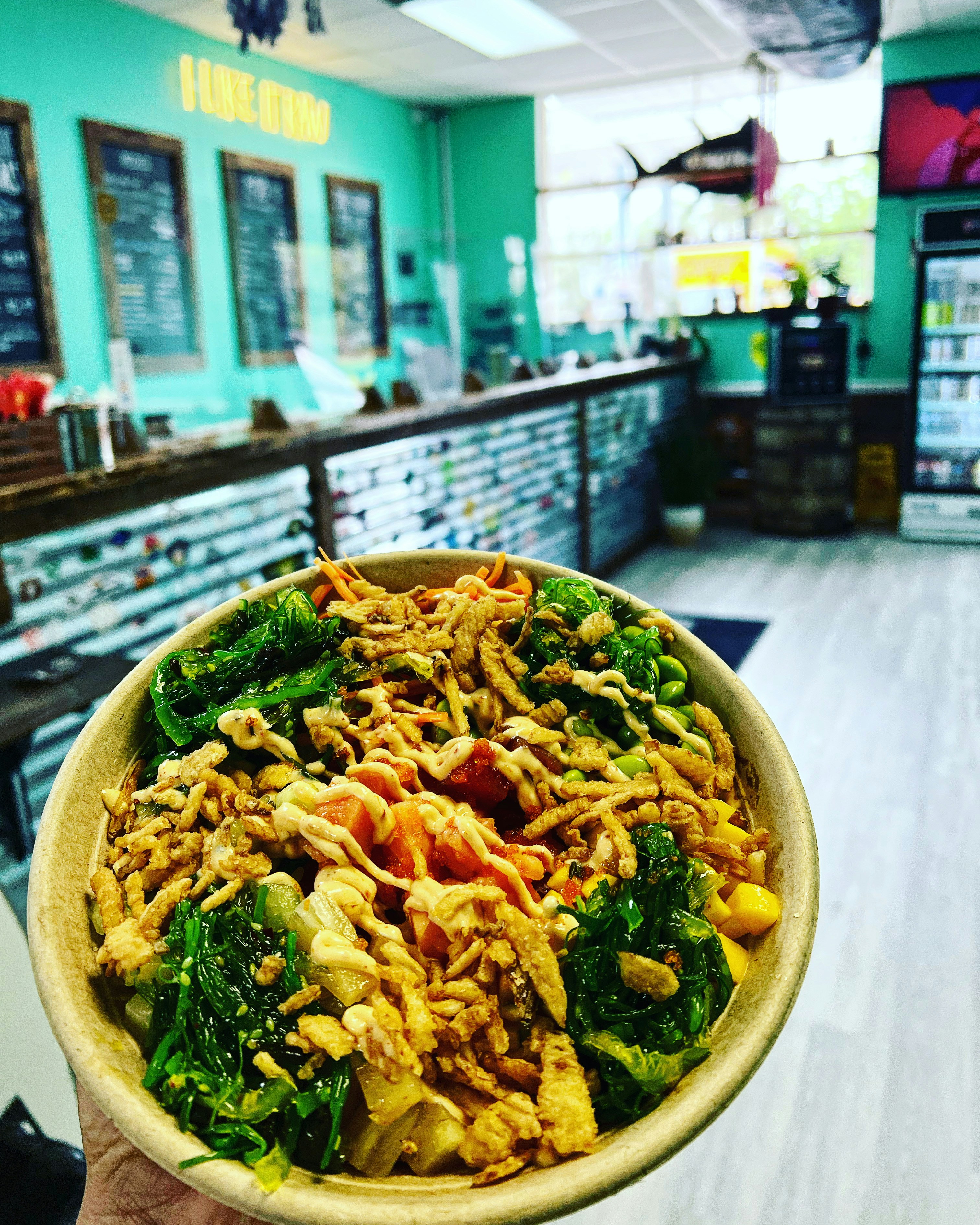Introduction to Food Trends of 2025
The food landscape in 2025 reflects a remarkable transformation, shaped by evolving consumer preferences driven by health consciousness, sustainability, and technological advancements. As society becomes increasingly aware of dietary impacts on well-being, health-centric foods have gained prominence. Consumers are more inclined than ever to seek out nutritious options that not only cater to their taste buds but also enhance their overall lifestyle. This shift has resulted in an increased obsession with foods that are rich in vitamins, minerals, and antioxidants, making wellness a central theme in the culinary world.
Sustainability has also emerged as a critical factor influencing food trends. With environmental concerns at the forefront of public discourse, there is a growing preference for locally sourced, organic, and plant-based foods. These choices reflect a deeper awareness of the ecological and ethical implications of food production. The appeal of sustainable foods is not merely rooted in their benefits for the planet; they often offer unique flavors and culinary experiences that capture consumer interest. Consequently, many food enthusiasts are cultivating a passion for ingredients that support both personal health and the environment.
Additionally, the role of technology in shaping food trends cannot be overlooked. The rise of food delivery apps, online grocery shopping, and meal planning services are revolutionizing how consumers interact with their food choices. These advancements enable individuals to experiment with diverse cuisines and ingredients previously unavailable in their local markets, fostering an obsession with trying new and innovative dishes. The integration of food technology has the potential to create unique gastronomic experiences that intrigue and inspire food lovers everywhere.
This combination of health awareness, sustainability, and technological innovation sets the stage for a vibrant exploration of the food obsessions that dominate 2025. As we delve deeper into this topic, we will uncover the specific foods that have captured the public’s imagination and contributed to these overarching trends.
The Top 10 Foods Making Waves
As we venture into 2025, several exciting food trends have taken center stage, captivating the palates of food enthusiasts and everyday consumers alike. Among these trending foods, innovative plant-based dishes and fusion cuisines are prominently featured, alongside traditional foods that have seen a modern resurgence.
Firstly, jackfruit tacos have experienced a remarkable rise in popularity, primarily due to their versatility and texture, which mimics pulled pork or shredded chicken. Rich in fiber and low in fat, jackfruit absorbs seasonings exceptionally well, making it an ideal canvas for bold flavors like smoky chipotle, tangy lime, and savory adobo. These flavorful tacos have gained traction across food trucks, vegan eateries, and high-end restaurants, especially among those seeking sustainable, meat-free options without sacrificing taste.
Next, cloud bread has emerged as a trendy alternative for those looking to reduce gluten intake. Made from simple ingredients like egg whites, cream cheese, and baking powder, its light, airy texture has turned it into a viral sensation on platforms like TikTok and Instagram. Beyond its whimsical appeal, cloud bread is celebrated for being low in carbs and highly customizable—whether sweetened with vanilla and berries for breakfast or seasoned with herbs and spices for savory snacks.
Fermented foods, such as kimchi and kombucha, have firmly established themselves in mainstream diets, celebrated for their gut health and immune-boosting benefits. Kimchi, a staple of Korean cuisine, is loaded with vitamins A and C, probiotics, and antioxidants, offering both spicy depth and a nutritional punch. Kombucha, a tangy, lightly effervescent tea, provides a refreshing, natural alternative to sugary sodas, and comes in a wide variety of artisanal flavors like hibiscus-ginger and lavender-lemon.
Another noteworthy trend includes raindrop cakes, ethereal desserts that visually captivate through their translucent, gelatinous structure resembling a droplet of water. Originating from Japan, these cakes are often served with roasted soybean flour (kinako) and a drizzle of brown sugar syrup (kuromitsu), blending delicate flavors and a mesmerizing, minimalist aesthetic that delights both the eye and the palate.
The concept of urban foraging has also gained momentum, wherein adventurous food lovers collect edible wild plants, mushrooms, herbs, and berries within city environments. Enthusiasts value the practice not only for its sustainability and hyper-local sourcing but also for the culinary creativity it inspires, encouraging the use of ingredients like dandelion greens, wild garlic, and nettles in modern recipes.
Moreover, mushroom coffee has garnered attention from health seekers, combining the energizing kick of traditional coffee with the adaptogenic and anti-inflammatory properties of functional mushrooms like lion’s mane, chaga, and reishi. This earthy, rich beverage offers a jitter-free energy boost and cognitive support, appealing to those looking to upgrade their morning ritual with added wellness benefits.
Lastly, charcuterie boards remain a beloved staple at gatherings and special occasions, but they have evolved to reflect contemporary tastes and dietary preferences. Today’s boards boast eclectic mixes featuring plant-based “meats,” artisanal nut cheeses, handcrafted preserves, exotic fruits, and inventive elements like beet hummus and turmeric crackers, offering a colorful, inclusive spread that caters to vegans, vegetarians, and omnivores alike.
As food trends continue to evolve in 2025, these ten foods represent a microcosm of cultural insights and dietary shifts that reflect broader changes in consumer habits and values.
Nutritional Value and Health Benefits
The popularity of certain foods in 2025 can be attributed not only to their flavors but also to the significant health benefits they offer. As dietary trends shift towards wellness and sustainability, the nutritional profiles of these foods are being scrutinized. This section delves into the nutritional value and health benefits of the top 10 foods in 2025, illustrating why they have captured the attention of consumers and health enthusiasts alike.
Many of the foods that are gaining traction fall into categories rich in essential nutrients, vitamins, and minerals. For example, plant-based options like quinoa and lentils provide high protein content while being low in fat, making them excellent choices for those following vegetarian or vegan diets. These foods also contain dietary fiber, which aids in digestion and promotes satiety, thus supporting weight management and overall digestive health.
Another trend is the rise of superfoods, such as avocados and berries, known for their antioxidant properties. Antioxidants are crucial as they protect the body from oxidative stress and inflammation, contributing to a lower risk of chronic diseases such as heart disease and diabetes. Nutritionists emphasize the importance of incorporating these nutrient-dense foods into daily meals for enhanced well-being.
Furthermore, practical insights from chefs highlight the versatility of these foods. They can be easily integrated into various culinary styles, allowing consumers to enjoy their beneficial properties without compromising on taste. The emphasis on minimally processed foods has also encouraged individuals to explore diverse cuisines, enriching their diets with flavors and nutrients.
In conclusion, the emphasis on the nutritional value of these top 10 foods reflects a broader shift towards a health-conscious lifestyle, prompting consumers to make informed dietary choices that favor well-being and sustainability.
Cultural Influence and Community Engagement
The culinary landscape is continuously shaped and influenced by cultural trends and community engagements, which have a profound impact on the foods that individuals become passionate about. In 2025, the intersection of tradition, innovation, and communal activities has created an environment where food transcends mere sustenance, emerging as a crucial facet of cultural identity and social interaction.
Social media platforms have played an instrumental role in popularizing specific foods as they serve as a space for individuals to share their gastronomic experiences. Hashtags and likes turn meals into trending topics, fostering global conversations around diverse culinary delights. For instance, platforms like Instagram and TikTok have led to the rise of aesthetically pleasing foods, such as colorful sushi rolls and intricately designed desserts, sparking global interest and obsession. Influencers, community chefs, and amateur food bloggers cultivate a sense of belonging through shared cooking tutorials and food challenges, making the culinary world more accessible and engaging.
Furthermore, community events and food festivals provide an opportunity for individuals to connect with their heritage and with each other through food. Local cultural festivals celebrating traditional cuisines create a platform for chefs to showcase their culinary creations while allowing attendees to indulge in diverse offerings. Events such as these not only introduce unique flavors to wider audiences but also solidify community bonds, as members gather to celebrate their culinary roots, thus fostering pride and passion for their traditional foods.
The impact of gastronomy on cultural identity cannot be overstated, as it helps instill a sense of belonging and preservation of heritage. Culinary practices—including the sharing of recipes and communal dining experiences—serve as both a celebration of tradition and an innovative exploration of new flavors. In this way, food obsession in 2025 illustrates the enduring power of cultural influence and community engagement, emphasizing how interconnected the human experience is through the act of sharing and enjoying food together.
Popular recipes at the moment:

Bold, Creamy, and Bursting with Flavor
This one pot creamy Cajun sausage pasta brings smoky, spicy goodness together with a rich, silky sauce—all in just one pan! A quick, easy dinner that’s perfect for busy nights and guaranteed to satisfy.

Leave a Reply